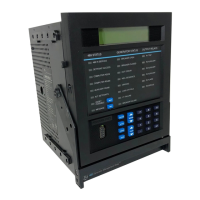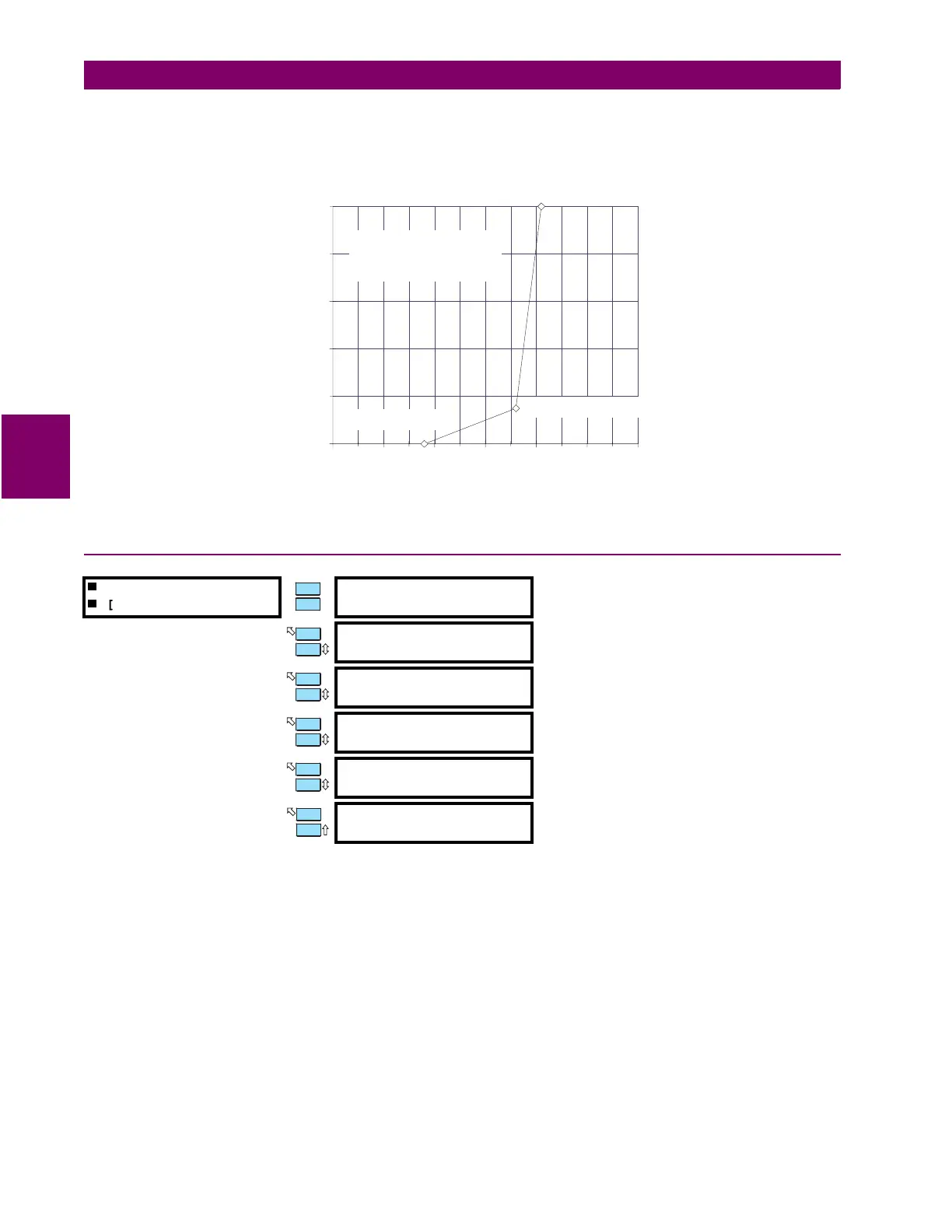4-64 489 Generator Management Relay
GE Power Management
4.10 S9 THERMAL MODEL 4 SETPOINT PROGRAMMING
4
It should be noted that the RTD bias feature alone cannot create a trip. If the RTD bias feature forces the thermal capacity
used to 100%, the machine current must be above the over-load pickup before an overload trip occurs. Presumably, the
machine would trip on stator RTD temperature at that time.
Figure 4–18: RTD BIAS CURVE
4.10.7 THERMAL ELEMENTS
Once the thermal model is setup, an alarm and/or trip element can be enabled. If the generator has been offline for a long
period of time, it will be at ambient temperature and thermal capacity used should be zero. If the generator is in overload,
once the thermal capacity used reaches 100%, a trip will occur. The thermal model trip will remain active until a lockout time
has expired. The lockout time will be based on the reduction of thermal capacity from 100% used to 15% used. This reduc-
tion will occur at a rate defined by the stopped cooling time constant. The thermal capacity used alarm may be used as a
warning indication of an impending overload trip.
THERMAL ELEMENTS
[ENTER] for more
THERMAL MODEL
ALARM: Off
Range: Off, Latched, Unlatched
ASSIGN ALARM
RELAYS (2-5): ---5
Range: Any combination of Relays 2 to 5
THERMAL ALARM
LEVEL: 75% Used
Range: 10 to 100% Used in steps of 1
THERMAL MODEL
ALARM EVENTS: Off
Range: On, Off
THERMAL MODEL
TRIP: Off
Range: Off, Latched, Unlatched
ASSIGN TRIP
RELAYS (1-4): 1---
Range: Any combination of Relays 1 to 4
Maximum Stator RTD Temperature
0
20
40
60
80
100
-50 0 50 100 150 200 250
RTD Bias Maximum
RTD Bias Center Point
RTD Bias Minimum
Hot/Cold = 0.85
Rated Temperature=130 C
Insulation Rating=155 C
Thermal Capacity Used
MESSAGE
ESCAPE
MESSAGE
ESCAPE
MESSAGE
ESCAPE
MESSAGE
ESCAPE
MESSAGE
ESCAPE

